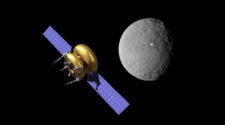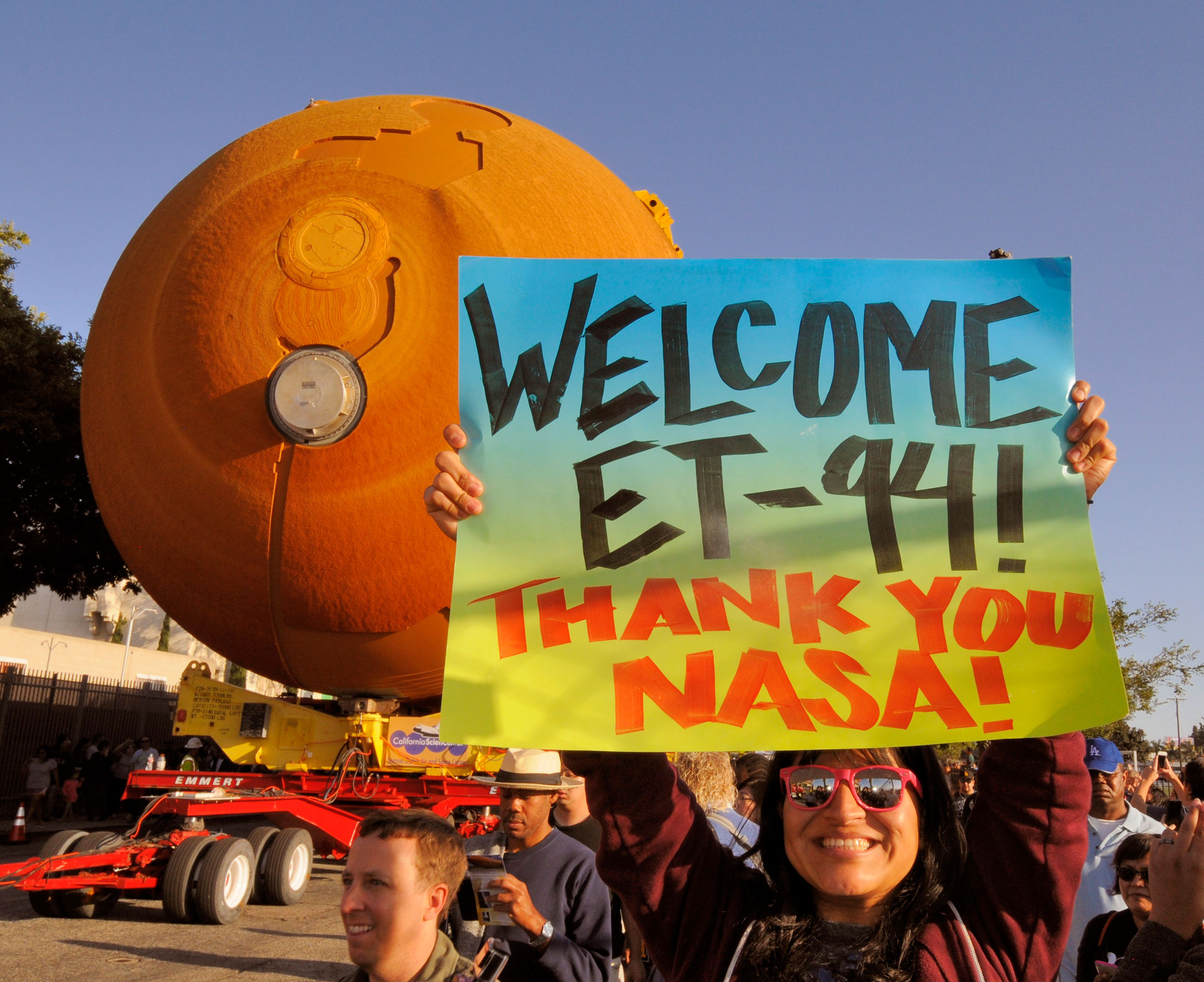
Hollywood…the very name creates visions of stars…okay…mostly ‘human stars.’ But every bit as popular throughout film history, ‘reaching for the stars’ has been a popular theme from comic books to radio, TV and film. Buck Rogers, Superman and Flash Gordon stirred youthful imaginations with visions of interplanetary travel and grasping for the stars ever since the Wright Brothers’ flying machine finally got us off the ground early in the last century.
The people of Los Angeles thronged the streets in 2012 to welcome the Space Shuttle Endeavour home to her birthplace, and final showplace of honor at the California Science Center, located in the heart of Los Angeles across the street from one of the country’s premier learning institutions, the University of Southern California, known as USC. Here she would be garaged until funding could be raised to build a structure suitable to display her in a meaningful way. That plan began to gel soon after her arrival, when fundraising began.
The idea to display Endeavour in her stacked arrangement, as they call it when the fuel tank and solid rockets are assembled and attached to the orbiter, came about when NASA was looking to scrap or salvage some of the many left-over Shuttle components laying around unused. A rather sizeable one of these was one of only two existing external fuel tanks left over from the concluded Shuttle program.
One was a mock-up fuel tank, never designed to be flight-worthy. NASA uses these mock-ups for study and training purposes, especially useful should something go wrong, which indeed it did when the Columbia broke during re-entry over Texas, effectively dooming the Shuttle program.
The second fuel tank was flight-worthy and ready for use in the next mission to be flown by Columbia.This same External Tank was used to test the foam insulation that covers it to see if the bits of it that sometimes broke loose during launch were in any way capable of damaging the leading edge of the orbiter wing. Scientists discovered to their surprise that this lightweight insulating material could indeed puncture a hole in the leading edge of the wing. The tragic loss of the Columbia also led to the realization that a way to inspect and repair damage to the surface of the vehicle, post-launch, would have to be developed.
The huge External Tank, to which the orbiter is affixed, is the last part to be jettisoned after launch and largely burns up over the ocean during re-entry. With the demise of Columbia, a large piece of history had been orphaned and its very existence was hanging in the balance between making history or becoming history. Luckily, someone realized what a treasure and opportunity they had in the one remaining flight-worthy External Tank.

About two years ago NASA agreed to gift External Tank #94, or ET-94 as it is commonly called, to the California Science Center. All the center had to do was arrange transportation. A chain of events and major planning immediately got underway. The tank was huge in size and certainly not flyable by plane as the orbiters had been. The move would require careful and special handling all the way. Only a handful of companies were qualified to perform such a move and handle it pretty much “door to door.”
Emmert International, a huge engineering and logistics giant with assets located all over the world, had the know-how and experience to fearlessly move almost anything from here to there. Masters of meticulous planning, they arranged everything from pickup of the tank from its home at NASA’s Michoud Assembly Facility near New Orleans, to transfer onto a specially fitted barge and subsequent passage through the Panama Canal (a first for an External Tank). Sounds simple…yet the dimensions of the bulky tank and the distance involved were daunting.
At 154 feet in length, the ET stands at the equivalent of a 15-story building and actually dwarfs the orbiter itself in launch position, where the massive ET looks like a canvas upon which the shuttle has been painted. The orbiter, however, is much heavier than the ET…which was shipped empty, of course, yet still weighed a 65,000 pounds.
The tank’s diameter is a slim 27.5 feet…much narrower than the span required by Endeavour to traverse the streets of Los Angeles, significantly reducing the impact on the trees and streets of the metropolitan area…which was minimal by comparison to the Endeavour move. There was, however, a blizzard of permits that had to be sought from the various cities through which the entourage had to pass thorugh during the 16 mile move from the coastline to the museum. There were a number of municipalities and utilities that had to be consulted and carefully coordinated with in order to move signals, signage and electrical wires during the move. Making the 90-degree turns along the route was the major challenge this time. While the wheels on the trailer could be turned 90 degrees, the rig itself could not back up. Each turn had to be precisely engineered and executed in forward motion only.
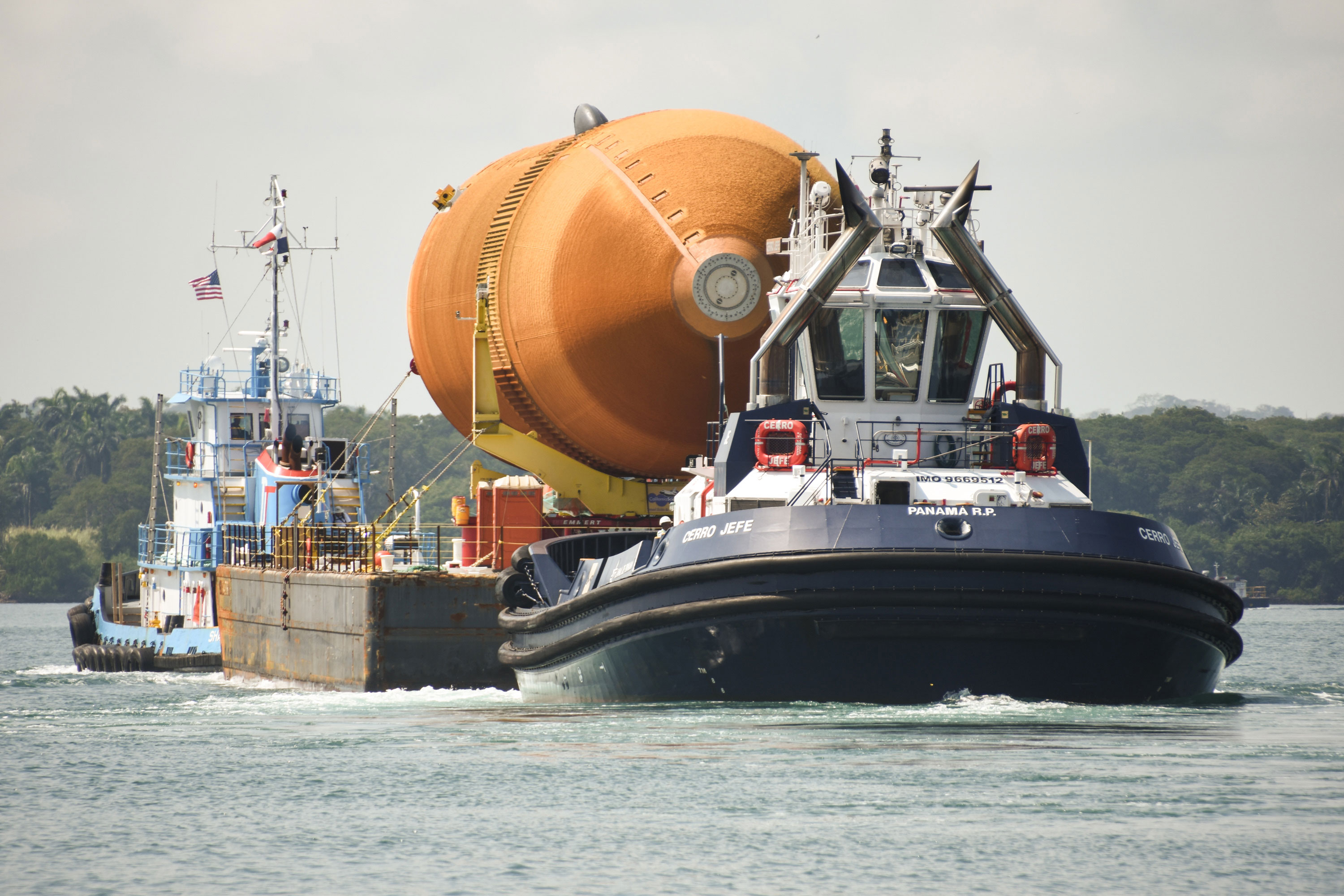
A lot could have gone wrong – but didn’t – during the 41 day voyage of 4,400 nautical miles journey through the multiple locks and the traffic of the busy Panama Canal. There was a moment of drama that occurred when ET-94 and her tow-barge encountered a fishing charter boat sinking off the coast of Mexico with four men in urgent need of rescue. It required great skill on the part of the skipper to pause and rescue the fishermen without putting his cargo at risk. The rescued fishermen were transferred to safety in Sand Diego, where even this unusual cargo was required to go through Customs inspection.
It was amazing that it all worked out so well that she arrived right on schedule on May 18 at Marina del Rey where a special Mardi Gras-style Gala fundraiser was planned for the evening of May 20 in a large and elegant tent pitched right next to the tank itself, which had been offloaded from the tow-barge. ET-94 and host of well-heeled guests were royally welcomed by museum officials and a smiling Mrs. Lynda Oschin who, along with her late husband, Samuel Oschin are the main benefactors of the California Science Center.
With the addition of ET-94, the California Science Center’s Samuel Oschin Air and Space Center will be the only place in the world that people will be able to go to see a complete Space Shuttle stack – orbiter, external tank, and solid rocket boosters – with all real flight hardware in launch configuration.
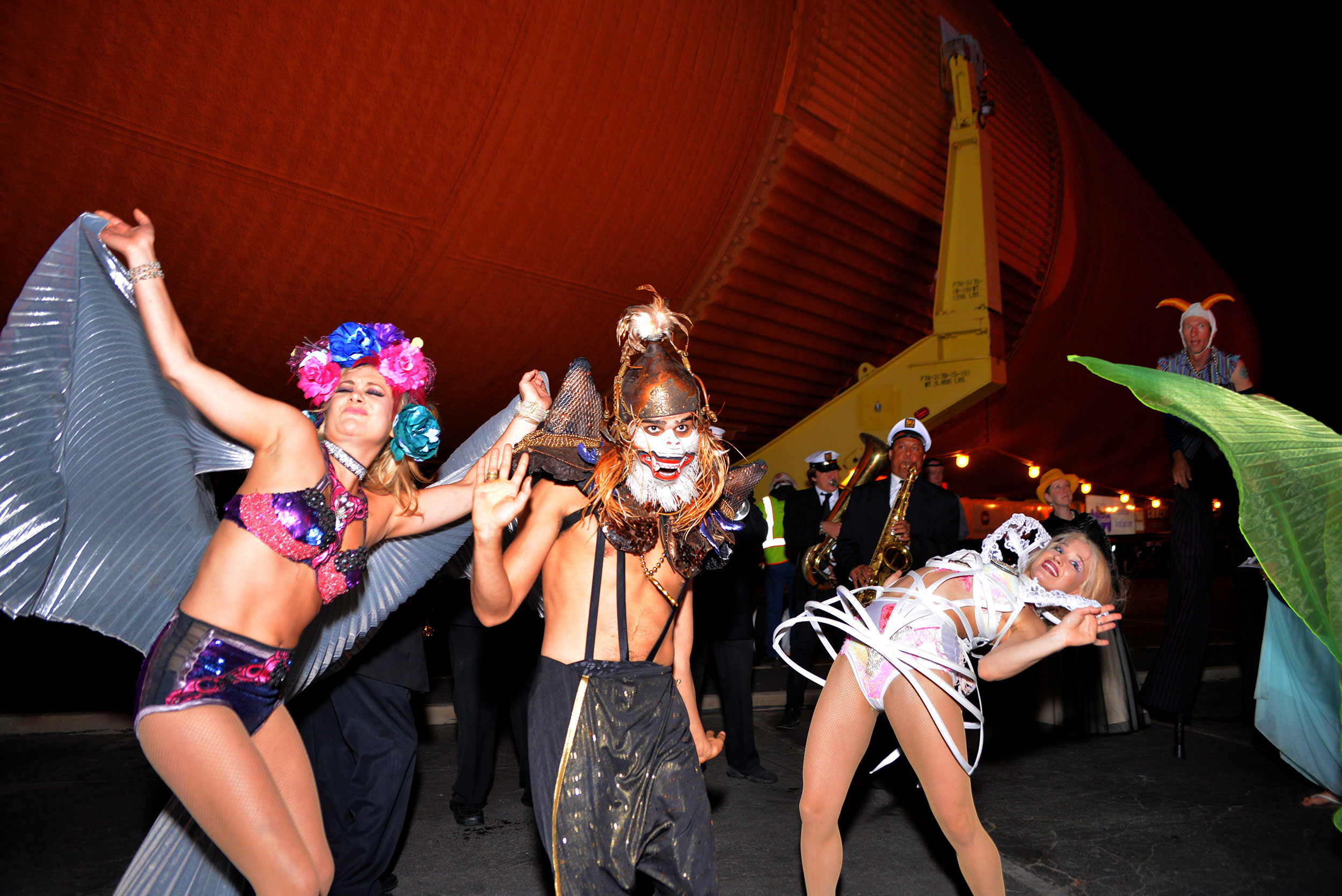
After an evening of celebration, ET-94 began the final leg of its journey at midnight—the 16-mile trek eastward to the museum, which was projected to require 18-20 hours to complete. This move was shorter than Endeavour’s move, which had originated from LAX and took three days to complete. The Shuttle move was conducted among a celebration of huge crowds along the lengthy route with stops in various locations for speeches, a stage show and making a number of tight turns and maneuvers along the route. The jubilant crowds back then sometimes had to bide their time for hours due to unforeseen delays in the tight spots where wheel sets had to be physically moved to get around obstacles.
ET-94 may not have had quite the sex appeal of a Space Shuttle, but it was definitely a sight to behold. Rolling a 15-story cylinder on its side through the city streets of Los Angeles is no mean feat.
The crowds turned out for this move too. They were awed by the ET’s size and presence. Many people came because they had been there for the Endeavour’s arrive. Others flocked to the route because they had missed seeing the Shuttle arrival and didn’t want to miss another once-in-a-lifetime experience.
As with the Space Shuttle, young people kept asking if this was the real Space Shuttle, or a replica? They found it hard to believe that these very objects were the real deal. That Endeavour had indeed gone to space and back a number of times…and that ET-94 had been meant to go to space had its orbiter not met with tragedy. And they could scarcely believe that the scars on the rust-colored body of the ET were caused by taking pieces of its foam covering for testing to determine what had gone wrong with the orbiter and how it could have possibly been damaged by a piece of lightweight foam.
Oh, there is still much to be learned from this spectacular pioneering form of space travel…the most complicated piece of machinery ever built by mankind…and we did it here, in the USA, over and over again. No doubt, Buck Rogers and Flash Gordon would feel very much at home at the Space Shuttle exhibit when it opens.
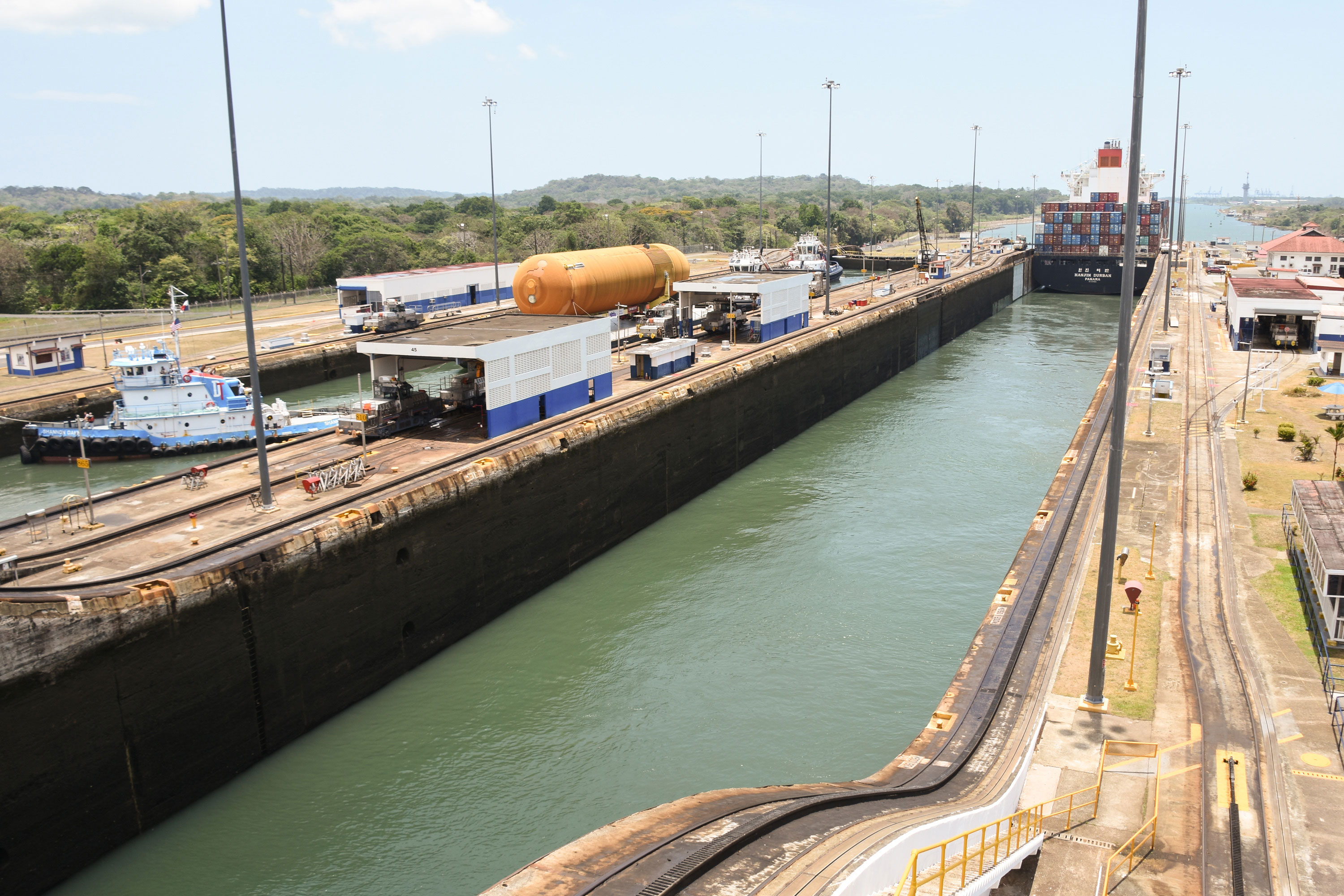

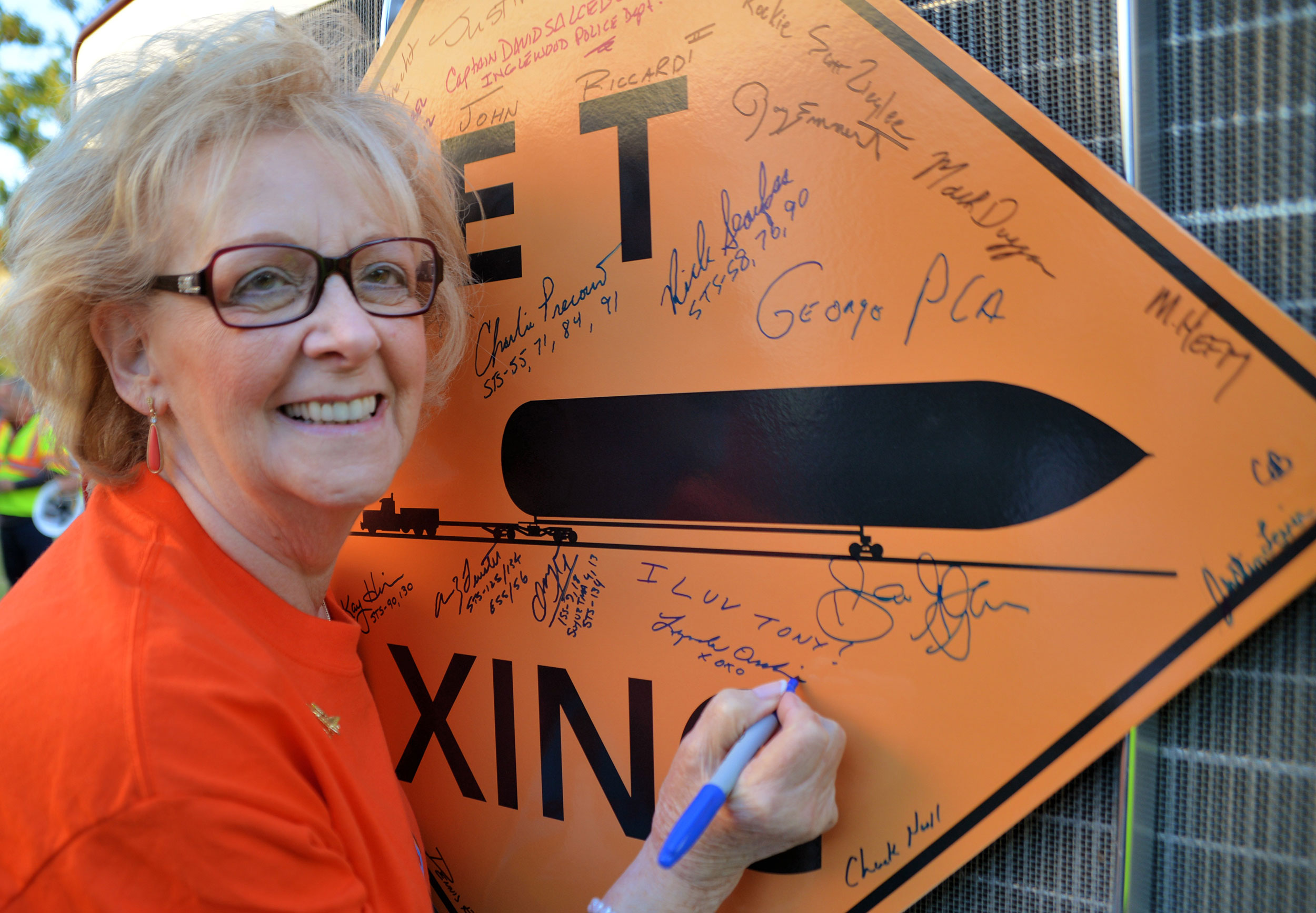
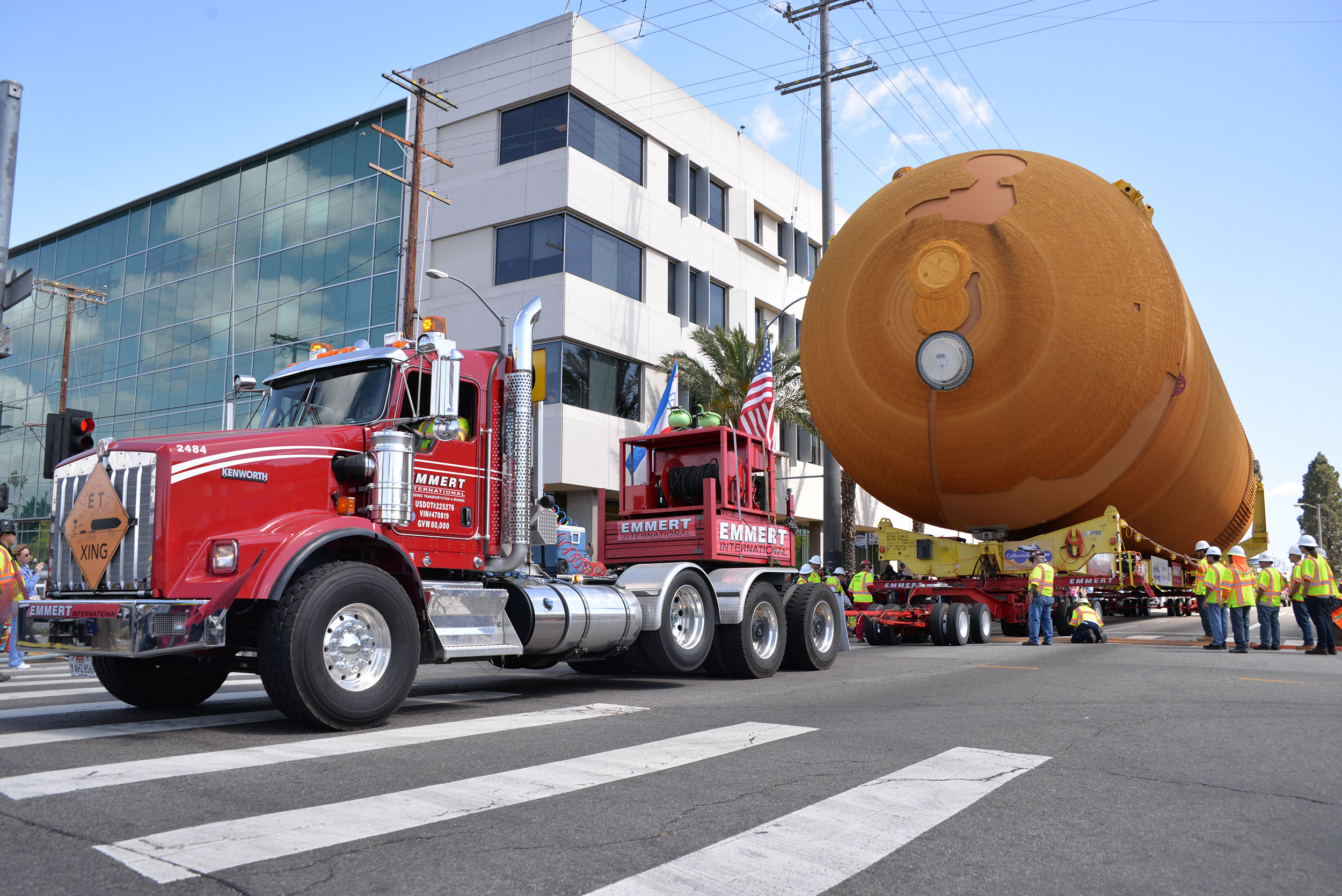

Julian Leek contributed to this article.


